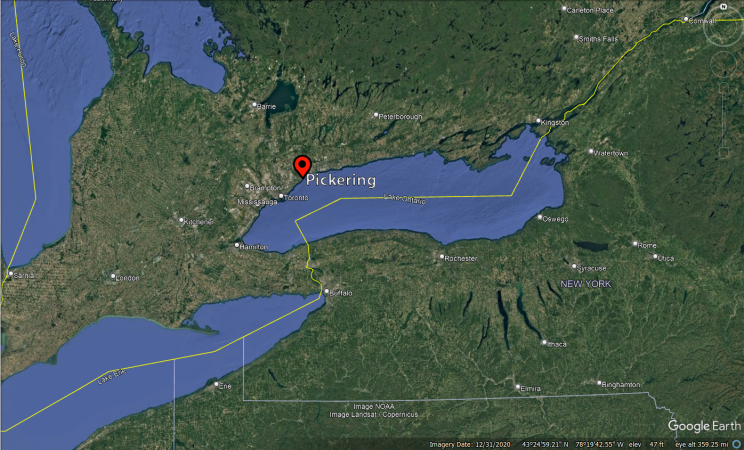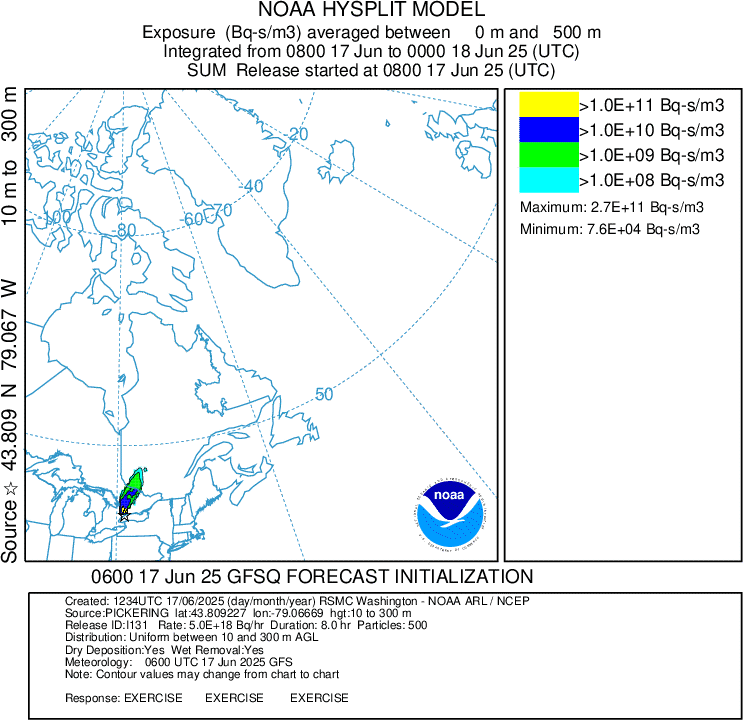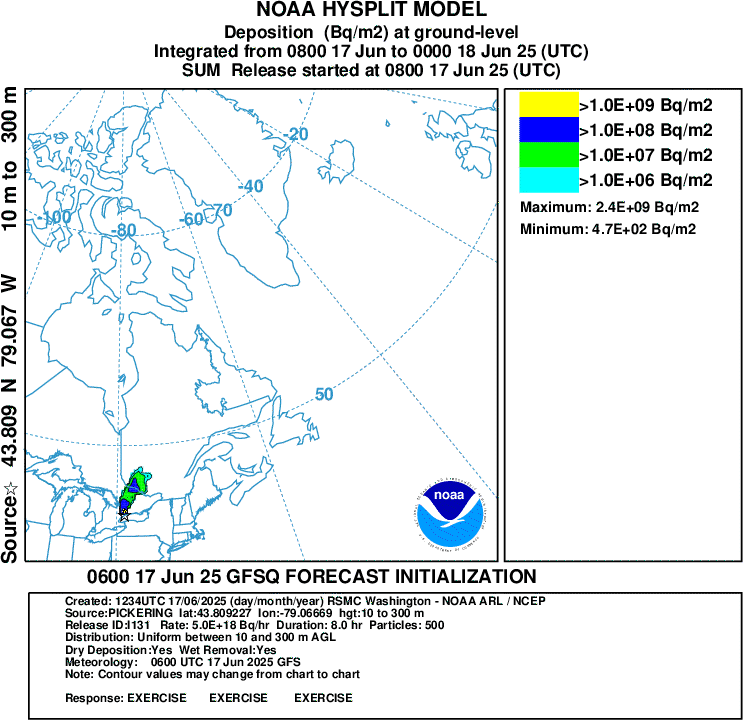June 25, 2025

Google Earth image of the powerplant location in Pickering, Ontario. Credit: NOAA
On Tuesday, June 17 NOAA’s Air Resources Laboratory (ARL) and the National Centers for Environmental Prediction (NCEP) conducted an exercise tracking a hypothetical leak at a nuclear power plant in Canada.
ARL and the National Weather Service’s NCEP were designated as a Regional Specialized Meteorological Center (RSMC) for the Washington region in 1993 by the World Meteorological Organization (WMO). The RSMCs are part of a system for early warning messaging tracking fallout from a nuclear accident and were a result of the International Atomic Energy Agency reaching out to WMO after the Chernobyl accident in 1986.



